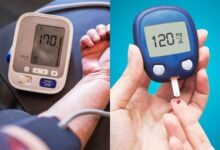
My last piece was on COVID-19 and Breast Cancer. This time I went back to our National Strategy for Cancer Control in Ghana. The ensuing is an extract from the document. The evidence is that at least a third of all cancers are preventable. Another third can be fully treated and managed with early diagnosis. A further third, even if untreatable, can be provided a reasonable quality of life.
Breast cancer is the second commonest cancer among women in Ghana. It forms 15% of all cancer and 40% of female cancers. In Ghana, between 50-70% of persons with breast cancer present with advanced (stage III and IV) disease many months (8-10 months) after first noticing a change in their breasts. The biological nature of breast cancers in Ghana also confers a poorer prognosis. The WHO estimates the incidence-mortality ratio of breast cancer in Ghana as 0.68, compared to 0.2 in the USA. Mortality from the disease is, therefore, relatively high in Ghana and other developing countries.
Breast cancer affects Ghanaians from as young as the age of 20 years. The disease is generally commoner as one gets older. Still, most breast cancer cases in Ghana are between the ages of 40 – 49 years, about a decade earlier than in Western countries.
Most cases of Breast Cancer do not have any identifiable cause. However, women should be educated about the predisposing factors of breast cancer and encouraged to adopt healthy lifestyles. Women who have an increased risk of breast cancer (e.g., strong family history of breast cancer in first-degree relatives) should be encouraged to be more.
The plan emphasizes early detection of breast cancer (screening), employing two methods- breast self-examination and clinical breast examination.
Breast self-examination is a means of creating breast cancer awareness and encouraging early detection of breast diseases. This education should start from the age of sixteen. The important message is to make women report any change in their breasts. There is a need for breast cancer education to address the misconceptions and stigma about the disease in society. In older women, educational messages should emphasize early detection and the importance of having prompt, recommended, and adequate treatment.
Breast self-examination is done a week after the menstrual periods in pre-menopausal. And on a particular day of each month for postmenopausal women.
Clinical Breast Examination is done every three years for those below 35 years of age and once a year for those who are 35 years and above. Mammography will be used for women who are 40 years and above.
Being overweight or obese increases the risk of several cancers, including breast, colon, endometrium, oesophagus, and kidney cancers.
The other point to note is stress. This link is informed by a paper by Antonova et al., titled “Stress and breast cancer: from epidemiology to molecular biology” and published in Breast Cancer Research 2011, 13:208. Studies estimate approximately 50% of breast cancer incidence to be attributed to known genetic, physiologic, or behavioral risk factors, with genetic risk factors accounting for 5 to 10% of breast cancer cases.
Established physiological and behavioral risk factors for breast cancer include having a first-degree relative with breast cancer, early menarche, late menopause, nulliparity or bearing of first child at a later age, overweight after menopause, certain types of benign breast diseases, alcohol consumption, and long-term use of menopausal estrogen replacement therapy. Other factors include smoking, certain aspects of nutrition (meat and fat consumption), physical activity, and psychological stress.
Studies published between 1966 and December 2002 examining the relationship between stressful life events and breast cancer risks concluded that variables significantly associated with breast cancer risk are an increased number of stressful life events. Stress can be acute (short-lived) or chronic (repetitive or occurring over an extended period).
Exposure to stress at specific periods of development has a more substantial impact on breast physiology. Women diagnosed with breast cancer are more likely to have undergone stress due to losses or social deficits in childhood and adolescence. The stress most strongly associated with increased breast cancer risk is stress induced by significant life events.
The stress hormone cortisol has two critical physiological roles in the stress–breast cancer association. Cortisol plays an essential part in mammary gland development and function, which may sensitize mammary tissues to modulations in cortisol signaling in the presence of stress. It also impacts certain aspects of oestrogen activity in the mammary gland, which may initiate protumorigenic changes during periods of stress.
Cortisol has protective effects on the organism by regulating immune function, promoting the memory of dangerous events, increasing blood pressure and heart rate to meet the physical demands of a fight or flight response, and making fuel available for sustaining increased physical activity. Stressful life events predispose one to hypertension, atherosclerosis, osteoporosis, immune dysfunction, and cancer.
Cortisol indirectly contributes to breast tumorigenesis by altering the generation or activity of oestrogen. A large body of evidence suggests that oestrogen plays a crucial role in breast cancer etiology. The prolonged or elevated presence of cortisol during periods of stress causes an increased level of oestrogen, and consequent development of breast cancer is stimulated by
Flavanol-rich cocoa has anti-oxidant, vasodilatory, anticoagulant, and anti-inflammatory properties. Intake of flavanol-rich cocoa counteracts negative emotions (Donald F. Smith. Benefits of flavanol-rich cocoa-derived products for mental well-being: A review. Journal of Functional Foods. Vol.5, Issue 1, January 2013, pgs 10-15). Cocoa contains high amounts of theobromine. Theobromine has antitumour, anti-inflammatory, and cardioprotective effects.
Stress can have a substantial effect on the gut microbiota composition. Diet rich in polyphenols helps maintain normal brain function and mental health. About 90-95% of total dietary polyphenols accumulate in the large intestine, broken down into less complex metabolites by the gut microbiota. Conversely, polyphenol metabolites modulate the composition of the gut microbiota.
The regular and daily consumption of flavanol-rich cocoa can very well counteract the effects of stress and reduce the stress-induced impact of breast cancer.
DR. EDWARD O. AMPORFUL
CHIEF PHARMACIST
COCOA CLINIC



